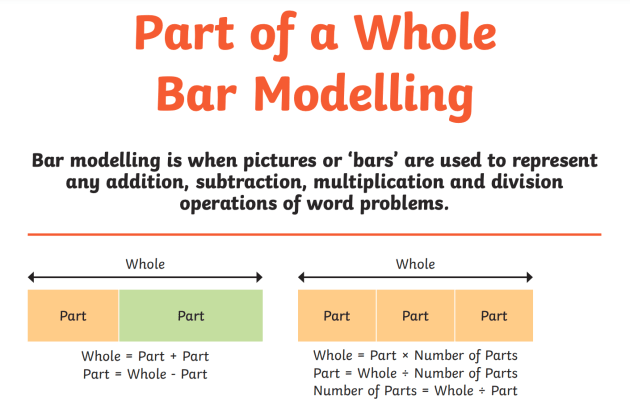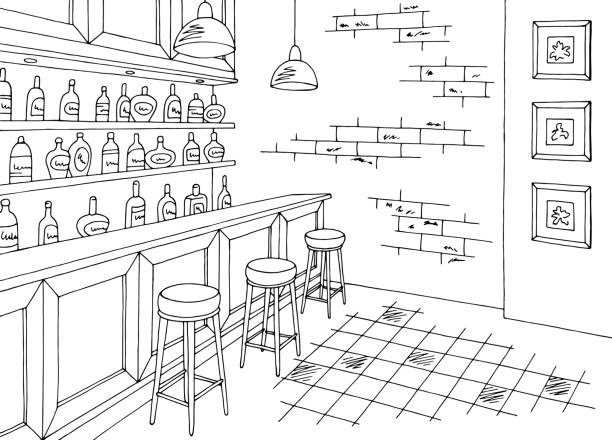How bar model drawing techniques support conceptual learning in mathematics
Wiki Article
Exploring Bar Model Drawing Techniques: A Comprehensive Overview to Picturing Mathematics Concepts
Bar model attracting strategies act as a valuable resource for both teachers and students in visualizing mathematical principles. These designs streamline complex mathematical connections, assisting in the comprehension of enhancement, department, multiplication, and subtraction. This guide details efficient methods for implementing bar models, fostering energetic involvement and real-world links. As readers explore the sensible applications and mentor suggestions, they will reveal exactly how these methods can transform their method to mathematics.Understanding the Essentials of Bar Version Illustration
Bar design drawing offers as an effective aesthetic tool in maths, facilitating the understanding of mathematical connections and problem-solving strategies. This method involves representing numbers and their relationships through rectangular bars, making it much easier to visualize procedures such as enhancement, department, multiplication, and reduction. Each bar's length represents a certain worth, allowing students to contrast quantities and comprehend percentages plainly.To create a bar design, one starts by identifying the problem's crucial elements, usually breaking it down right into parts that can be visually represented. In an easy enhancement trouble, two bars can be attracted, with their lengths standing for the addends. The mixed size illustrates the amount. Furthermore, bar versions can be adjusted for extra intricate troubles, including portions and ratios, by changing the bars appropriately. Grasping these fundamentals lays a strong foundation for effective analytical and deeper mathematical comprehension.
Advantages of Making Use Of Bar Versions in Math
Making use of bar versions in maths supplies numerous benefits that improve learning and understanding. These visual depictions aid trainees in comprehending complicated ideas by breaking them down into manageable parts. Bar versions supply a clear framework for illustrating relationships between numbers, making abstract concepts extra concrete. They advertise a deeper understanding of mathematical operations and help with analytical by allowing learners to imagine the information they are functioning with.Bar models support the growth of important thinking abilities, as students need to analyze and translate the visual info to attract final thoughts. This method motivates active interaction with the material, enhancing retention and mastery of mathematical principles. By cultivating a solid foundation in visual literacy, bar versions equip learners to approach numerous mathematical challenges with self-confidence. On the whole, the integration of bar versions into mathematics education and learning shows beneficial in growing both understanding and analytical capabilities amongst trainees.
Using Bar Designs to Enhancement and Subtraction
Bar models serve as an effective tool for visually representing addition and subtraction issues. By showing the partnership in between numbers, they enhance understanding and help with analytical. In enhancement, real-life applications of these designs can aid students realize mathematical principles in practical contexts.Representing Enhancement Aesthetically
Visual help can significantly enhance their understanding of these procedures when trainees encounter enhancement and subtraction problems. Bar versions function as reliable devices for representing enhancement. By dividing a rectangular shape right into sections that correspond to the numbers entailed, trainees can imagine the relationship in between the amounts. As an example, if a student requires to include 3 and 5, they can produce a bar divided right into two sections: one area representing 3 and the various other representing 5. This clear representation not just streamlines the addition process however additionally enhances the principle of combining quantities. As students control these aesthetic help, they establish a much deeper comprehension of addition, resulting in boosted problem-solving skills and greater confidence in their mathematical capacities.
Reduction With Bar Models
Although subtraction is usually perceived as an extra complicated operation than enhancement, bar designs can successfully clarify this procedure for pupils. By visually representing the amounts included, trainees can much better understand just how numbers connect to each other. In a bar design for reduction, one bar stands for the total, while another indicates the quantity being subtracted. This visual distinction helps trainees comprehend the principle of "taking away." For example, if a bar reveals 10 systems, and another bar standing for 4 systems is removed, students can quickly see that 6 units stay. This method not just fosters understanding of subtraction yet additionally aids in establishing analytical abilities, enabling students to envision their mathematical reasoning and enhance their total comprehension of mathematical concepts.Real-Life Application Instances
Recognizing reduction through bar models lays a structure for applying these techniques in real-life circumstances. In different contexts, such as budgeting or purchasing, individuals can visualize exactly how much money continues to be after expenses. If a person has $50 and invests $20, a bar version can stand for the total amount and the spent portion, showing that $30 is left. Additionally, moms and dads can use bar designs to help kids recognize exactly how many even more products require to be contributed to complete a collection, such as having 3 apples and needing 5. This graph streamlines complicated troubles, facilitating understanding and retention. Eventually, bar versions function as efficient devices in day-to-day decision-making, enhancing mathematical understanding in functional scenarios.Imagining Reproduction and Department With Bar Versions
In checking out the application of bar versions for multiplication and division, it is vital to grasp their foundational ideas. Building reproduction designs permits learners to envision connections between numbers, while reliable division methods can be highlighted with these aesthetic help. This method enhances understanding and problem-solving skills in mathematics.Comprehending Bar Versions
Bar versions offer as an effective aesthetic device for illustrating the principles of reproduction and division. They make it possible for learners to represent mathematical relationships in a structured layout, promoting a deeper understanding of these procedures. In multiplication, bar models display teams of equivalent size, allowing individuals to envision the complete quantity when integrating these teams. Alternatively, in department, bar designs help depict how a total amount is separated right into smaller, equal parts, clarifying the concept of dividing. By using these aesthetic aids, trainees can understand the underlying principles of multiplication and division extra effectively. This strategy not only boosts understanding however likewise supports problem-solving abilities, making bar versions an important asset in mathematical education.Building Multiplication Models
Constructing reproduction models making use of bar representations provides a clear approach for picturing the procedure of multiplication. These versions enable students to stand for reproduction as teams of equal components, making abstract concepts extra concrete. To highlight (3 times 4), a student can attract one bar divided right into three equivalent sections, each standing for 4 systems. Additionally, developing a 2nd bar with the very same length enhances the understanding of repeated addition, as each section represents one team. This graph not just aids in understanding multiplication yet likewise boosts analytical skills. By using bar versions, students can better comprehend relationships in between numbers and develop a robust structure for much more complicated mathematical concepts, leading to boosted self-confidence in their capacities.Envisioning Department Approaches

Solving Word Problems Using Bar Model Techniques

For instance, in a problem entailing addition and subtraction, trainees can draw different bars for each and every amount and after that manipulate them to find the solution. This procedure not just clarifies the problem however additionally cultivates a much deeper conceptual understanding. Bar models can be adapted for different types of word issues, making them versatile across different mathematical topics. Ultimately, using bar versions can considerably enhance pupils' problem-solving skills by supplying a clear aesthetic pathway to come to the right solution.
Integrating Bar Designs in Various Mathematics Topics
Bar versions can be effortlessly integrated right into numerous math subjects, enhancing trainees' understanding of concepts beyond standard arithmetic. In algebra, these aesthetic devices aid in representing formulas and inequalities, allowing students to picture relationships between variables. When taking on geometry, bar designs can highlight the properties of shapes and spatial thinking, assisting students comprehend concepts like location and perimeter effectively. In data, bar models promote the interpretation of information sets, allowing pupils to contrast quantities and recognize patterns aesthetically. Additionally, integrating bar designs within dimension subjects help in understanding units and conversions by supplying a tangible representation of amounts. By utilizing bar versions throughout various mathematical areas, teachers can promote a deeper comprehension of complicated concepts, consequently enhancing problem-solving skills and advertising crucial thinking (bar model drawing techniques). This adaptability shows the energy of bar designs as a foundational tool for students in their mathematical journeyTips for Training Bar Versions Efficiently
Integrating bar versions right into training methods requires thoughtful approaches to optimize their performance. Educators must start by presenting bar versions with basic, relatable instances that trainees can quickly grasp. This aids to develop confidence and familiarity with the concept. Gradually increasing the intricacy of troubles permits learners to use their skills gradually. In addition, instructors should motivate trainees to develop their own bar designs, advertising energetic involvement and ownership of their discovering.Including collaborative tasks can additionally boost understanding, as pupils review and solve issues in groups. Constant feedback is important; educators should offer useful commentary on pupils' bar model depictions to lead enhancement. Lastly, attaching bar models to real-life circumstances reinforces their significance, aiding trainees see the practical applications of their mathematical abilities. By applying these strategies, educators can effectively harness the power of bar versions in their mathematics guideline.
Frequently Asked Questions
Can Disallow Designs Be Made Use Of in Other Subjects Besides Mathematics?
Bar models can undoubtedly be utilized in different topics beyond mathematics. They efficiently highlight concepts in science, social researches, and language arts, assisting to visually stand for relationships, procedures, and ideas for boosted understanding throughout self-controls.What Age Team Is Ideal Suited for Discovering Bar Models?
Bar versions are best fit for kids ages 7 to 12, as they create concrete thinking skills throughout this duration (bar model drawing techniques). At this age, trainees can successfully realize abstract concepts via aesthetic depiction and analytical methodsAre There Digital Tools for Creating Bar Models?

How Can I Examine Student Comprehending of Bar Models?
Reviewing trainee understanding of bar versions can involve tests, empirical assessments, and team conversations. Teachers could also examine pupils' completed versions and their ability to discuss their reasoning, ensuring a thorough analysis of understanding.What Prevail Errors When Using Bar Designs?
Typical mistakes when utilizing bar versions include misstating amounts, stopping working to properly label bars, perplexing addition and subtraction, disregarding to make use of constant ranges, and ignoring the relevance of clear visual splitting up between various components.In enhancement, bar designs can be adapted for extra complicated troubles, including portions and proportions, by changing the bars accordingly. Subtraction is frequently regarded as a more complex operation than enhancement, bar designs can properly clarify this procedure for pupils. In a bar model for reduction, one bar represents the total, while one more indicates the quantity being subtracted. If a bar reveals 10 devices, and an additional bar representing 4 systems is removed, pupils can easily see that 6 devices continue to be. When splitting a total amount into equivalent teams, trainees can draw a lengthy bar to stand for the whole and after that segment it right into smaller sized bars that indicate each group.
Report this wiki page